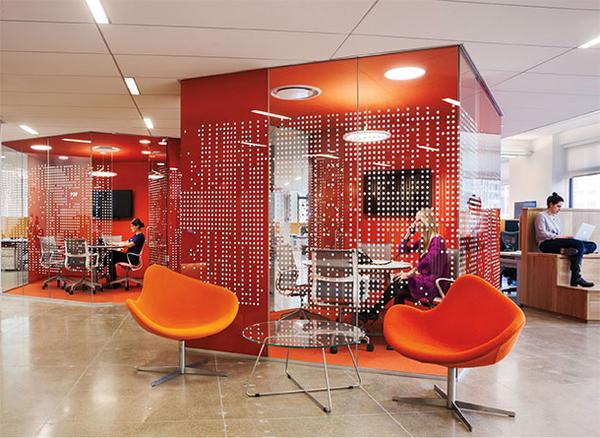Your Cart is Empty

We have recently been digesting a fabulous article on the shifting trends in office design by Lana Bortolot of Entrepreneur Magazine. Here is a link to the article if you want to read the whole thing - it's entitled "Designing a Better Office Space."

Above picture borrowed from this article; it is a picture taken at the office of Pandora, the music streaming giant.
What stood out most to us from the article is that the trend toward "incubation, cross-pollination, symbiosis and co-working" in the actual design of office environments is growing, and not only in startup and technology companies. Across the map in companies of every type and size, offices are tending away from cubicles and even private spaces in general and toward more collaborative environments. This includes small meeting spaces, flexible work space assignments so that people can work in whatever area suits their current project or focus, and open meeting spaces through the office.
Many offices are also getting even more creative about designing spaces where workers can connect in natural ways, from including ping pong tables to coffee bars to even incorporating outside space where workers can walk and talk. This might still seem very "hippie" to large swaths of corporate America, but this trend is not just taking off with the millenials and technology gurus. What was so interesting about the article is that this trend is spreading to all sorts of more traditional industries as well, from real estate to finance and even to law firms!
The fact that law firms, built on privacy and confidentiality and studying the ins and outs of the law, have made even one step away from the traditional office set up ought to be proof enough that this movement away from traditional, private work space and toward collaborative, open work space is here to stay. Or at least that it is going to make an impact on the way offices are conceived, across the slate of industries.
Will it lead to the death of the corner office? Will this trend eventually make the vast majority of offices "open" so that the sought after work location is not the corner, private office but the spot with the most potential for creative collaboration and progress? It's hard to tell, and certainly there is always going to be a need for private spaces. But overall it seems that even to attract the high level workers coming out of college today, businesses need to begin thinking in a new way about designing an office from the ground up. It seems that today's young workers are more interested in Millennial office design layouts and features such as awalking trails, a coffee bar, and ping pong than they are in the elite corner office with the huge oak desk.
We tend to think this shift is a good one (though one article we read disagreed). It will lead companies of all types to more collaboration and less isolation among team members, more cooperation and less cut-throat competition. Related to office furniture, we have certainly seen the shift away from the traditional, heavy, wood furniture toward lighter, cleaner, more modern designs that are focused on dual functionality (can serve both as a private desk and a meeting location). It's simplest to see this in our conference tables, which often serve as the buyer's executive desk and double as the meeting location for their team.
In the recent Workplace of the Future 2.0 Competition, the winning designer, Organic Grid +, took this notion of the shifting conception of office layouts and flipped it a bit. They saw the need for spaces to be able to be constantly modified based on the needs of the worker. In other words, the office needs to be built for the worker, instead of only hiring workers that fit with your office plan. They confronted the fact that not all workers are extroverts, so there must be the ability, within an open office plan, for workers to get some privacy or to meet one on one. Their winning design envisioned such a space.

As the pendulum swings, this is a great reminder that office designs always need to keep in mind that some people are best at working collaboratively and some people need a mix of isolated work time with their collaborative time. The ability to have an office with optional workspaces, depending on what a worker needs to accomplish on any particular day, is probably ideal.
Comments will be approved before showing up.